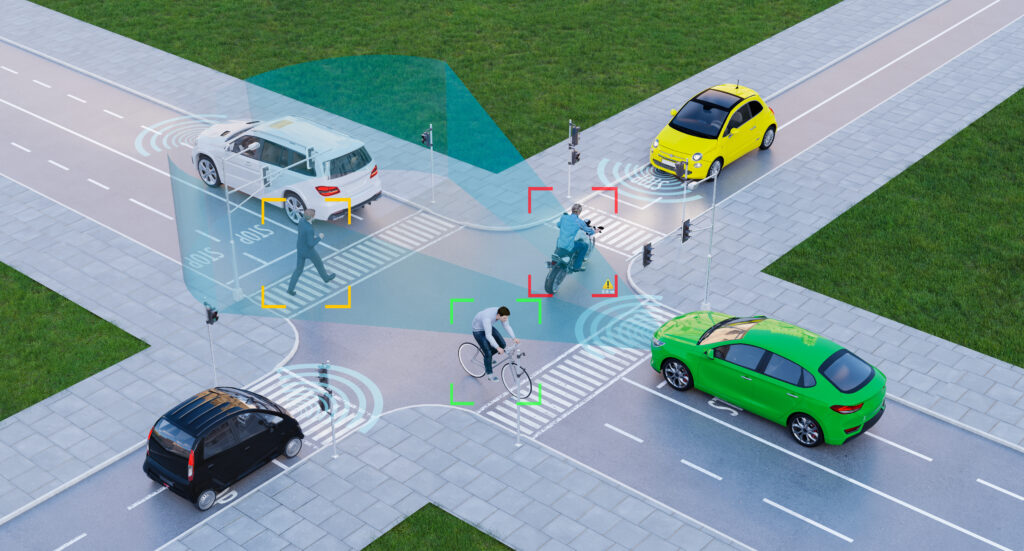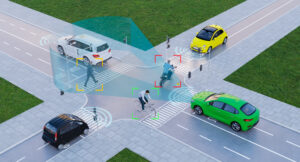It once seemed like a futuristic dream but is now being tested worldwide. Advancements like AI (artificial intelligence), machine learning, and sensor technology have drastically increased the capabilities turning your smart car into a genius. What does this mean for the future of mobility? Let’s look at the latest breakthroughs and trends in this rapidly developing industry.
1. Autonomous Vehicles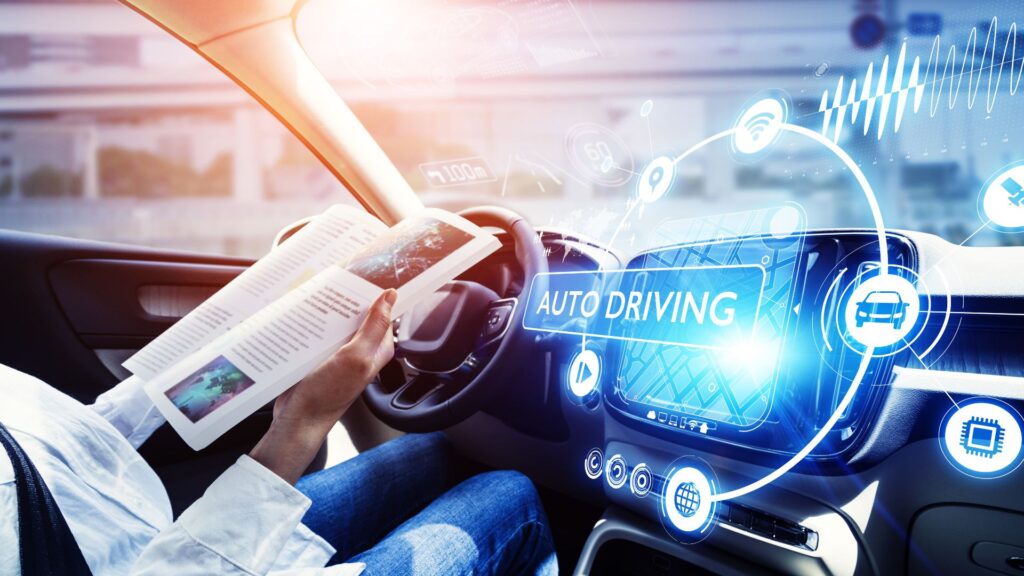
Understanding Autonomous Driving Levels
The Society of Automotive Engineers (SAE) classifies autonomous vehicles into six levels, from Level 0 (no automation) to Level 5 (fully autonomous). Understanding these levels helps clarify where we are today and where we’re headed.
- Level 0: The driver handles all driving tasks with no automation.
- Level 1: Basic driver assistance, such as cruise control or lane-keeping assist.
- Level 2: Partial automation, where the car can control steering and acceleration but requires the driver to remain engaged.
- Level 3: Conditional automation, where the car can drive itself under specific conditions, but the driver must be ready to take over.
- Level 4: High automation, where the vehicle can handle most driving tasks without human intervention but may be limited to certain environments (e.g., urban areas with mapped infrastructure).
- Level 5: Full automation, meaning the car requires no human input and can operate in any condition where a human driver could.
Where We Stand Today
Most vehicles on the road today fall between Levels 1 and 2, with some companies testing Level 3 technology. Fully autonomous Level 5 vehicles are still years away due to regulatory, technological, and ethical challenges. However, major automakers and tech companies are making rapid strides toward Level 4 automation.
2. The Role of Artificial Intelligence and Machine Learning
How AI Powers Self-Driving Vehicles
At the heart of autonomous driving is AI, which enables vehicles to interpret and respond to their surroundings. AI-powered self-driving cars rely on neural networks and deep learning algorithms to process vast amounts of data in real-time.
Computer Vision and Sensor Fusion
AI integrates information from multiple sources, including cameras, LiDAR (Light Detection and Ranging), radar, and ultrasonic sensors. This sensor fusion allows the vehicle to create a detailed map of its surroundings, identify obstacles, and make driving decisions.
For example, Tesla’s Full Self-Driving (FSD) software relies heavily on computer vision, analyzing real-time camera feeds to detect road signs, lane markings, and pedestrians. In contrast, Waymo uses a combination of LiDAR and AI to build a precise 3D model of the environment, ensuring accurate object detection and navigation.
Reinforcement Learning for Safer Driving
Machine learning enables self-driving cars to improve over time by learning from real-world driving scenarios. Companies like Tesla, Waymo, and Cruise use reinforcement learning, where AI continuously refines its driving decisions based on feedback from simulated and real-world experiences. This learning process is critical for developing safe and reliable autonomous systems.
3. Advances in Sensor Technology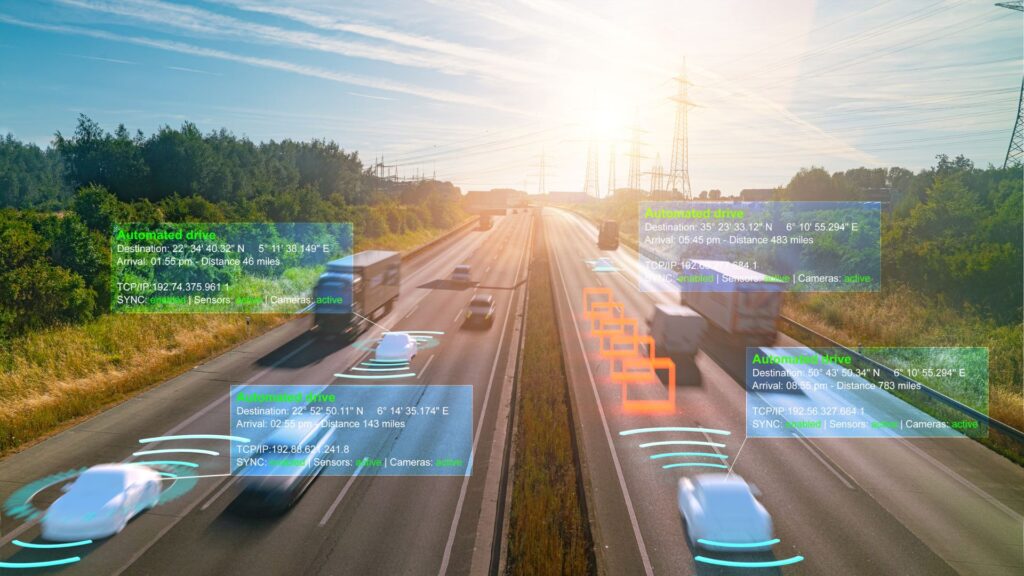
LiDAR, Radar, and Cameras
Self-driving cars rely on an array of sensors to navigate roads safely. Each sensor type has a unique function:
- LiDAR: Uses laser beams to create a 3D map of the surroundings, allowing precise distance measurements.
- Radar: Detects objects and their speed, even in poor weather conditions.
- Cameras: Provide detailed visual input to identify traffic signals, pedestrians, and lane markings.
While LiDAR is known for its high accuracy, it remains expensive, prompting companies like Tesla to pursue a camera-based approach. Meanwhile, others, such as Waymo, continue refining LiDAR to improve cost and efficiency.
Improvements in Sensor Fusion
Combining multiple sensor inputs enhances the vehicle’s ability to make informed decisions. Advanced sensor fusion systems integrate data from LiDAR, radar, and cameras to create a holistic view of the road. This redundancy ensures that even if one sensor fails, the vehicle can still operate safely.
4. The Role of 5G and Connectivity
How 5G Enhances Self-Driving Technology
High-speed 5G networks are a game-changer for autonomous vehicles, providing ultra-fast data transmission and low-latency communication. With 5G, self-driving cars can:
- Communicate with other vehicles (V2V) to avoid collisions.
- Interact with infrastructure (V2I) such as traffic lights and road sensors.
- Access real-time cloud data for navigation and traffic updates.
Edge Computing for Faster Decision-Making
5G also enables edge computing, where data processing occurs closer to the vehicle rather than relying on distant cloud servers. This reduces latency, allowing self-driving cars to make split-second decisions with minimal delays.
5. Ethical and Regulatory Challenges
The Moral Dilemma of Autonomous Vehicles
One of the biggest debates surrounding self-driving cars is the ethical implications of AI-driven decision-making. If an accident is unavoidable, should the car prioritize the safety of its passengers or pedestrians? These moral dilemmas raise complex questions that need to be addressed before full-scale adoption.
Government Regulations and Legal Hurdles
Self-driving cars operate in a gray area of regulation. While some states, such as California and Arizona, allow autonomous vehicle testing, federal laws are still catching up. Governments worldwide are working on safety standards, liability issues, and insurance policies for autonomous driving.
Public Trust and Adoption
Even with advanced technology, widespread adoption of self-driving cars requires public trust. High-profile accidents involving autonomous vehicles, such as Uber’s self-driving car fatality in 2018, have raised concerns. Companies must prioritize transparency, safety testing, and public education to build confidence in autonomous technology.
6. The Future of Self-Driving Cars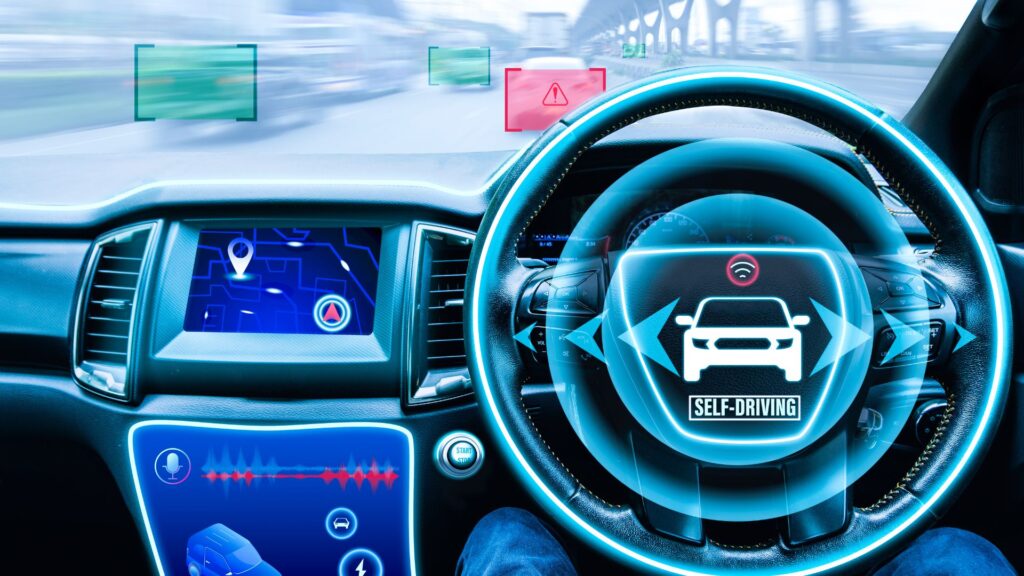
The Road Ahead
While full autonomy (Level 5) is still years away, advancements in AI, sensors, and 5G are rapidly pushing the boundaries of self-driving technology. Companies like Tesla, Waymo, Cruise, and Nvidia are leading the charge, investing billions in research and development.
Impact on Transportation and Society
Self-driving cars have the potential to:
- Reduce traffic accidents caused by human error.
- Improve traffic flow and reduce congestion.
- Increase mobility for elderly and disabled individuals.
- Transform ride-sharing and delivery services.
When Will We See Fully Autonomous Vehicles?
Experts predict that fully autonomous vehicles may become mainstream by the 2030s, though regulatory approval and infrastructure development remain key challenges. In the meantime, expect more semi-autonomous features to enhance driver assistance and safety.
Final Thoughts
Self-driving car technology is evolving rapidly, with AI, sensor advancements, and 5G connectivity driving innovation. While challenges remain in ethics, regulations, and public trust, the progress made so far is undeniable. The future of mobility is autonomous, and as technology continues to improve, we are inching closer to a world where cars drive themselves safely and efficiently.
